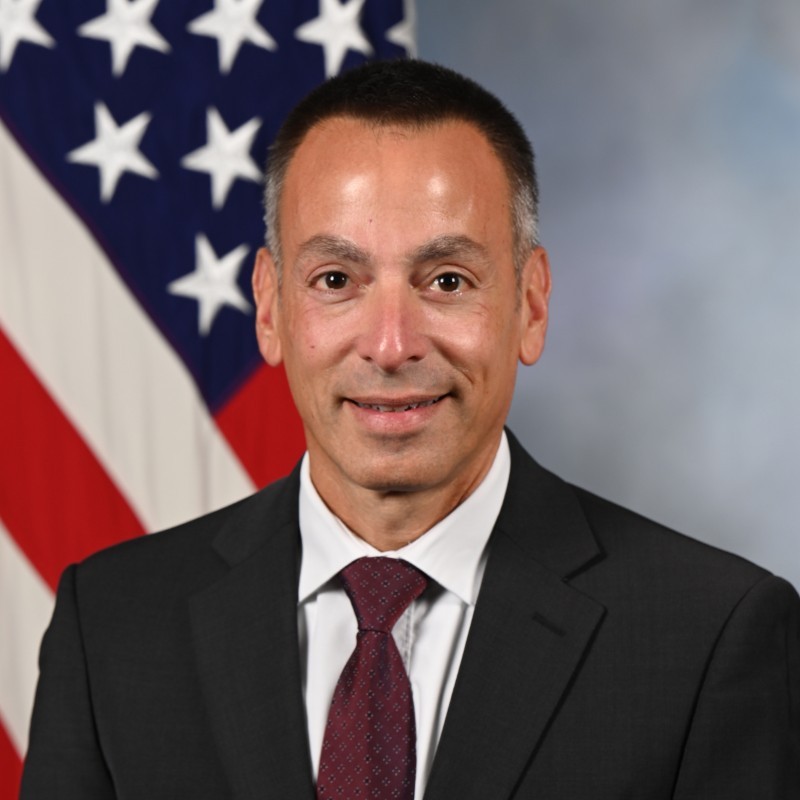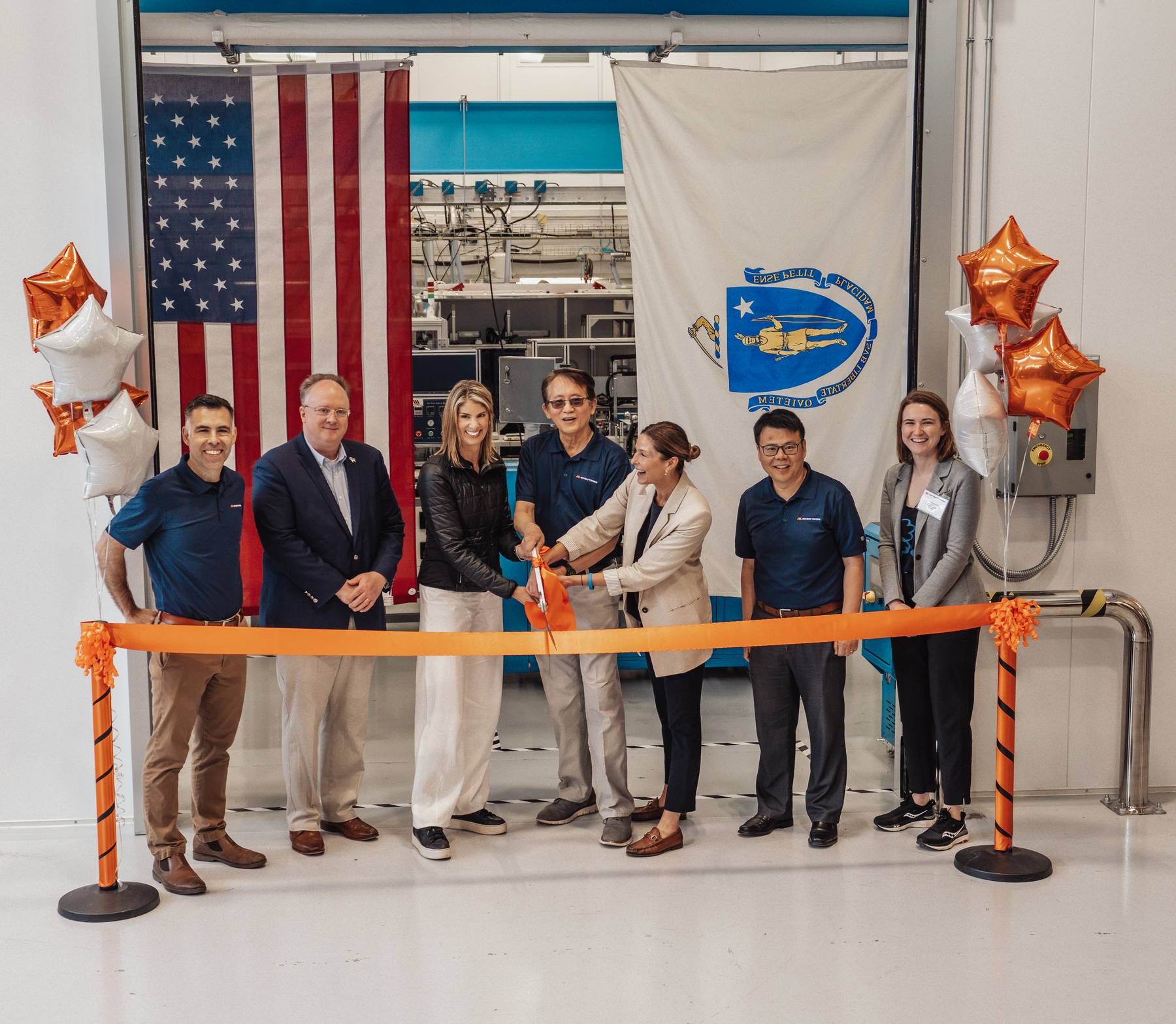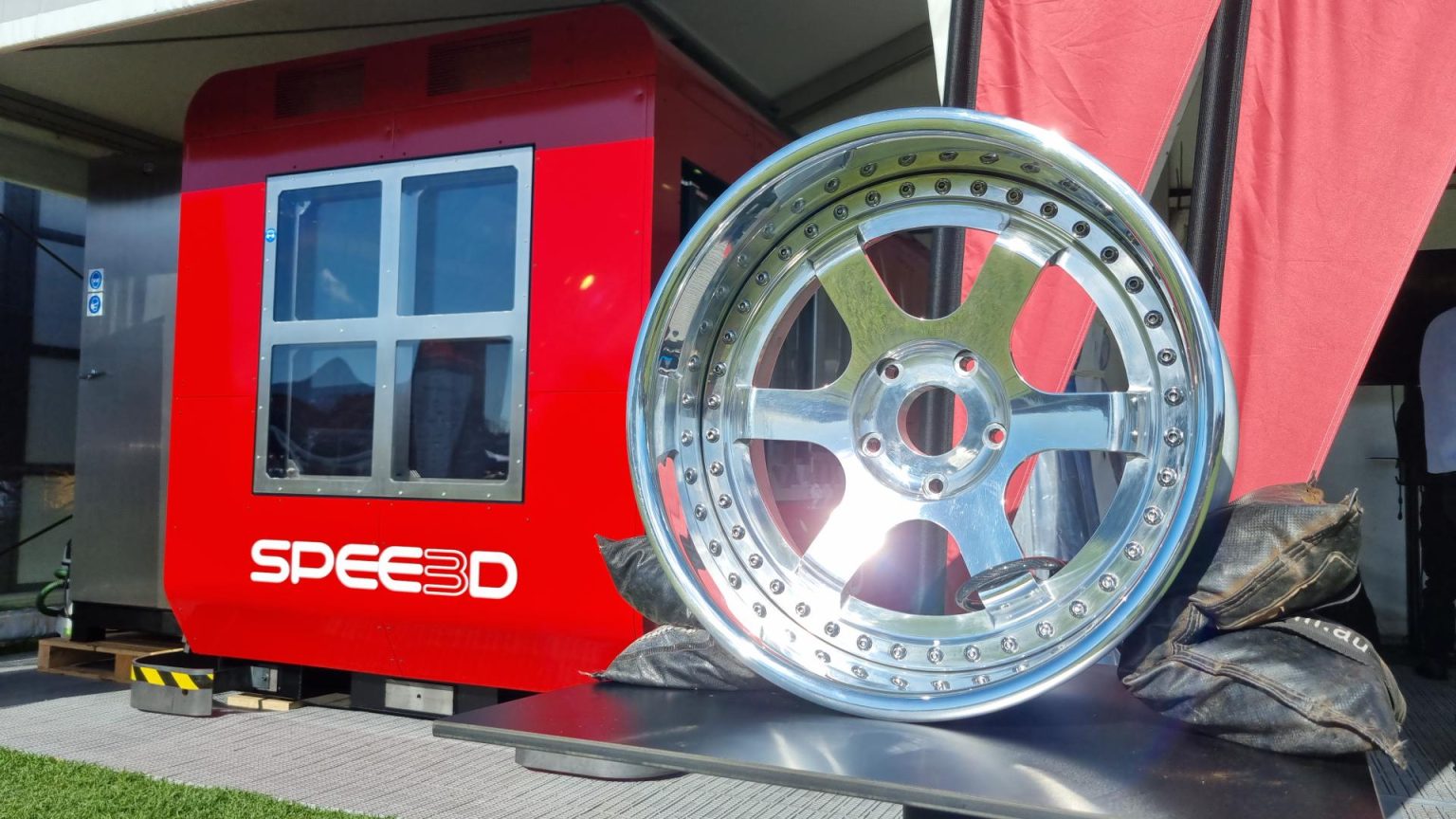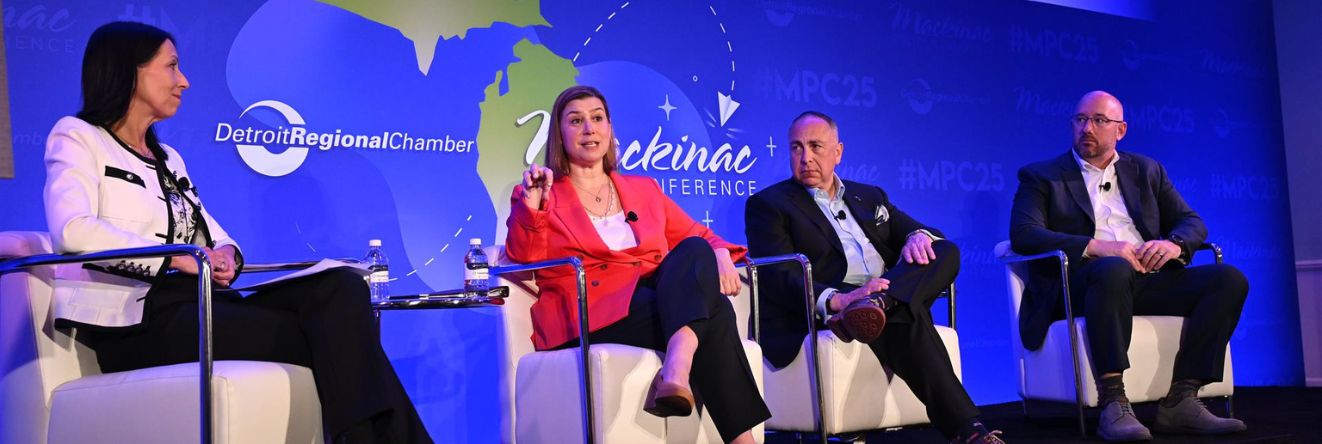Welcome to the June edition of A Capitol View!
Federal spending debates are in full swing as Congress finalizes a landmark tax package and congressional action builds on the Trump administration’s budget blueprint for Fiscal Year 2026 that begins Oct. 1.
Reconcilable differences: President Trump’s ‘One Big Beautiful Bill Act’ that passed by the House of Representatives in May is working its way through the Senate. The legislation is slated to extend provisions from the 2017 Tax Cuts and Jobs Act, add hundreds of millions of dollars for military and border security initiatives, and slash social and healthcare programs.
The GOP leadership has imposed a July 4 deadline to wrap up the so-called reconciliation package, ahead of the August deadline to raise the nation’s debt limit or risk default.
The Senate Armed Services Committee has released their portion of the spending package, matching the House’s $150 million boost for Pentagon priorities, including shipbuilding, defense supply chain resiliency, and cybersecurity, among others.
Changes, changes. SMI and its clients are working with industry groups in raising concerns about the House bill watering down or sunsetting some of the clean energy tax credits that were enacted during the last administration and provide crucial incentives for companies to invest in domestic processing and production of battery materials.
The Battery Advocacy for Technology Transformation (BATT) Coalition joined other advocacy groups in calling for changes to the House version of the One Big Beautiful Bill Act, particularly the Section 45X Advanced Manufacturing Production Credit and other measures to minimize the role of Foreign Entities of Concern (FOEC) such as China in the domestic supply chain for critical battery materials.
Convening authority: BATT also hosted a media roundtable with Rep. Gabe Evans (R-CO) and Rep. Raul Ruiz (D-CA) to discuss their bipartisan Critical Minerals and Manufacturing Support Act that would expand the 45X credit and also co-hosted a Critical Minerals Roundtable on Capitol Hill with the Bipartisan Congressional Critical Materials Caucus.
SMI also organized a series of meetings with Senate staff, which signaled a willingness by lawmakers to address the industry concerns. Senate Commerce Committee Chair Ted Cruz (R-TX) has suggested the Senate version could differ from the House-passed bill by 30-40%, with major changes to energy credits in the offing.
What’s next: The Senate seems poised to make significant changes to the House bill. Ultimately, the full Senate and House will have to hammer out a compromise version.
Related: Trump Strikes a Deal to Restore Rare Earths Access
Plus: American energy needs a surgical approach to innovation
More budget resources: Trump Administration’s FY26 Budget Request
And: President Trump’s FY2026 defense budget: continuing priorities, new missions
Plus: Trump administration unveils more detailed proposal for steep 2026 spending cuts
SMI SPOTLIGHT
 ‘EXTENSIVE EXPERIENCE’: It’s a dynamic period for SMI and our clients as we navigate the reordering of federal priorities. That means bringing aboard more firepower to maximize our advocacy efforts and help seize upon the raft of new opportunities on the horizon.
‘EXTENSIVE EXPERIENCE’: It’s a dynamic period for SMI and our clients as we navigate the reordering of federal priorities. That means bringing aboard more firepower to maximize our advocacy efforts and help seize upon the raft of new opportunities on the horizon.
We are very excited to add to the team David Bortnick, a veteran of the White House Office of Management and Budget and House Appropriations Committee, as vice president.
“David brings extensive experience in federal budgeting, appropriations, and national security policy, making him a valuable addition to our team,” said SMI COO Ken Wetzel. “We look forward to leveraging his expertise on behalf of our clients and the leadership role he will play in SMI’s federal marketing efforts.”
Budget chops: Most recently, Bortnick served as a Professional Staff Member on the House Appropriations Committee, where he spent 11 years shaping investment priorities for the Defense and State Departments and overseeing billions of dollars in annual and emergency funding bills. He previously spent 12 years in the executive branch, including eight years in senior roles at the White House Office of Management and Budget, where he was a legislative analyst for foreign affairs and trade.
“I’m excited to be joining the SMI team,” Bortnick said. “SMI has an outstanding reputation and a long history of partnering with industry, universities, and nonprofits. I look forward to helping clients navigate the federal budget and appropriations process to support U.S. government priorities.”
Read more: SMI hires federal budget veteran David Bortnick as vice president
 ‘Speed of relevance’: SMI also continues to expand its ranks of senior advisors with policy and technical expertise to help clients turn concepts into capabilities.
‘Speed of relevance’: SMI also continues to expand its ranks of senior advisors with policy and technical expertise to help clients turn concepts into capabilities.
This month we added Victor Pugliano, who brings decades of experience managing key programs to strengthen the defense industrial base and sharpen the military’s technological edge.
Vic served in a number of important Pentagon roles, including Director of Materials Science and Technology, Deputy Director of the DoD Manufacturing Technology (ManTech) program, and Acting Principal Director for Advanced Materials within the Office of the Secretary of Defense.
Closing gaps: “Aligning the priorities from the government with the capabilities of industry continues to be a major challenge. This cuts across the defense industrial base. one example is in the availability and affordability of critical minerals and materials. The government demand signal and investments are simply not coming quickly enough. It requires much better communication with industry as well as breaking down barriers between agencies to align priorities and funding.”
He added: “By working closer with the industrial base, I am committed to trying to do on the outside what I couldn’t on the inside. Closing these gaps is simply too important for our national security.”
 ‘Better tools and technologies’: Another new senior advisor is the Honorable Alex Wagner, the former Assistant Secretary of the Air Force for Manpower and Reserve Affairs and an experienced defense policy official who has held senior positions in the Pentagon and the private sector.
‘Better tools and technologies’: Another new senior advisor is the Honorable Alex Wagner, the former Assistant Secretary of the Air Force for Manpower and Reserve Affairs and an experienced defense policy official who has held senior positions in the Pentagon and the private sector.
Wagner has managed portfolios ranging from military recruiting to speeding up the delivery of new technologies to the troops and nuclear weapons strategy.
People power: As Assistant Secretary of the Air Force, he was responsible for recruiting and retention, compensation, health care and dependent care, and discipline for the United States Air Force and United States Space Force, including the United States Air Force Academy.
“So much of SMI’s client work is about getting better tools and technologies into the hands of the warfighters quickly. I know first-hand from the men and women who serve just how effective they can be when platforms, systems, and budgets are delivered at the speed of relevance,” Wagner said. “That’s why I’m looking forward to supporting SMI’s public policy initiatives across the spectrum, from space to university research and development efforts, ensuring that those that serve have meaningful access to the full arsenal of American ingenuity.”
 Last but not least: We are also thrilled to announce that Chloe Gonzalez, who previously served as a policy research intern, has been promoted to SMI defense policy analyst.
Last but not least: We are also thrilled to announce that Chloe Gonzalez, who previously served as a policy research intern, has been promoted to SMI defense policy analyst.
Chloe has been coordinating interactions throughout the defense appropriations process, tracking emerging developments, and examining a wide range of industrial issues for clients.
Her academic grounding in Constitutional and International Law, International Relations, and Political Parties provides her with a well-rounded perspective on both domestic and global policy.
ENERGY
 ‘THE FUTURE OF MANUFACTURING’: SMI client AM Batteries unveiled a new facility in Billerica, Massachusetts, that will use a game-changing manufacturing process for electrodes that help power vehicles, data centers, military equipment, and much more.
‘THE FUTURE OF MANUFACTURING’: SMI client AM Batteries unveiled a new facility in Billerica, Massachusetts, that will use a game-changing manufacturing process for electrodes that help power vehicles, data centers, military equipment, and much more.
“Our dry-electrode process helps battery manufacturers dramatically reduce costs without sacrificing quality and performance,” said CEO Lie Shi. “With the opening of this facility, we’re entering a new chapter — one that supports both AMB’s growth and the American battery revival.”
He added: “All the battery makers realize this should be the future of Manufacturing.”
Why it matters: AMB’s proprietary Powder to Electrode™ dry coating translates to 30% lower capital costs, 50% lower operating costs, 45% less energy consumption, and a 5x smaller factory footprint compared to conventional wet coating methods, the company says.
The breakthrough was based on the work of Worcester Polytechnic Institute professor Yan Wang and Heng Pan, who is now at Texas A&M University. AMB raised a total of $69 million between 2022 and 2024 from investors that include TDK Ventures, Toyota Ventures, and Anzu Partners.
Jobs report: The company has doubled its workforce in the past year by adding 25 new jobs and plans 15 more in 2025. The potential for new jobs was one reason the Massachusetts Technology Collaborative provided roughly half the $5 million investment for the new center.
Rep. Lori Trahan, who attended the June 2 opening of the new facility, said it “marks a major milestone in strengthening our domestic battery supply chain and creating good-paying, future-ready jobs.”
“By investing in cutting-edge clean energy technologies like dry electrode manufacturing,” she added, “AM Batteries is helping to position Massachusetts – and the United States – as a global leader in next-generation battery innovation.”
 OCEAN POWER: SMI is also proud to be supporting the California Polytechnic State University in its game-changing development of new technologies to unleash the power of wave energy – and the next generation of innovators.
OCEAN POWER: SMI is also proud to be supporting the California Polytechnic State University in its game-changing development of new technologies to unleash the power of wave energy – and the next generation of innovators.
In a partnership with the U.S. Navy’s Naval Facilities Engineering and Expeditionary Warfare Center, a team of mechanical and electrical engineering students began demonstrating the Expeditionary Ocean Power Generator in Morro Bay.
“We’re basically asking to create a device that could use the ocean’s potential energy to create electricity and power,” said David Nyberg, a Cal Poly mechanical engineering student.
Read up: Cal Poly SLO students test wave energy device in Morro Bay
DEFENSE
 FIELD TEST: The University of Tennessee, an SMI client, is leading the way in helping the U.S. Army to develop ways to repair equipment in the field as part of a push for “expeditionary manufacturing” that can keep our troops on the move.
FIELD TEST: The University of Tennessee, an SMI client, is leading the way in helping the U.S. Army to develop ways to repair equipment in the field as part of a push for “expeditionary manufacturing” that can keep our troops on the move.
In the first soldier-led demo, members of the Tennessee National Guard, working with UT experts and 3D printing companies and SPEE3D and VRC Metal Systems, recently experimented with Cold Spray, a form of additive metal manufacturing.
‘I am excited’: “We may fight for an hour to a day and spend the next 22 hours or so fixing, resting and getting ready for the next fight,” said Col. Donny Hebel. “In these circumstances, having a repair part accessible can often mean the difference between victory and defeat. I am excited to see where we go from here.”
“Shortening the logistics tail and saving the Army money on long lead time replacement parts is fantastic,” added SMI VP Damian Kunko: “SMI lobbied to secure the first tranche of funding to initiate this project, and we are very pleased to see real-world results deployed in the field.”
Read more in National Guard Magazine.
 ‘RISE TO THE CHALLENGE’: New bipartisan legislation would create 10 defense technology hubs across the country over the next three years to spur greater innovation and investment in national security-related technologies to compete with China and other potential adversaries.
‘RISE TO THE CHALLENGE’: New bipartisan legislation would create 10 defense technology hubs across the country over the next three years to spur greater innovation and investment in national security-related technologies to compete with China and other potential adversaries.
The Defense Technology Hubs Act, introduced by Sens. Eric Schmitt (R-MO) and John Hickenlooper (D-CO), would authorize $375 million, with equal cost-sharing at the local level.
“The United States faces an ever-growing challenge of maintaining our advantage amid rapid advancements and innovations from our foreign adversaries like China, and we must rise to the challenge,” said Schmitt, a member of the Armed Services Committee.
The regional hubs would work closely with other federal innovation engines such as the Defense Innovation Unit, Defense Advanced Research Projects Agency, Manufacturing USA Institutes, U.S. Economic Development Administration’s Tech Hubs, and the National Science Foundation’s Regional Innovation Hubs.
Afterburner: The Navy, meanwhile, unveiled a new program to quickly assess the potential of emerging tech from “growth-stage ventures aiming to transition their technologies.”
Crucible Afterburner, powered by NavalX’s Northwest Tech Bridge in partnership with FedTech, “provides a comprehensive pathway to DoD acquisition through tailored market intelligence, expert advisory services, and strategic matchmaking with prime partners.”
The deadline for submissions is June 20.
Related: Gen. Caine calls for connecting with ‘founders and funders’ of emerging tech
Also: DoD issues implementation guidance for ‘Ensuring Commercial, Cost-Effective Solutions in Federal Contracts’
LIFE SCIENCES
 ‘EARLY INTERVENTION’: DARPA, the Pentagon’s research and development agency, is on the lookout for “state-of-the-art capabilities in the simulation of disease outbreaks.”
‘EARLY INTERVENTION’: DARPA, the Pentagon’s research and development agency, is on the lookout for “state-of-the-art capabilities in the simulation of disease outbreaks.”
SMI VP Dr. Travis Taylor is identifying university clients and partners “with strong computational and modeling capabilities” to respond to the request for information.
DARPA is seeking responses “from a diverse range of experts including academic, industry, commercial, and start-up communities offering unique solutions to best contextualize how diseases spread between individuals, communities, and geographies and how early intervention can minimize the spread and negative impact through minimizing disease.”
For more information contact Travis at travis@strategicmi.com.
STRATEGIC COMMUNICATIONS
 DRIVING THE NARRATIVE: SMI’s strategic communications practice is helping a growing roster of clients to break through the noise to build support for new policies and programs – through media engagement, op-eds, public and private events, think tank discussions, and trade group appearances.
DRIVING THE NARRATIVE: SMI’s strategic communications practice is helping a growing roster of clients to break through the noise to build support for new policies and programs – through media engagement, op-eds, public and private events, think tank discussions, and trade group appearances.
Some recent examples range from podcast appearances that get the ear of decision makers, news coverage of company milestones and manufacturing initiatives, and media events featuring clients and lawmakers.
On stage: Another example was a panel discussion at the Detroit Regional Chamber’s Mackinac Policy Conference moderated by SME Executive Director and CEO Jeannine Kunz on how Michigan is expanding its leadership role in national defense.
The session also featured Sen. Elissa Slotkin, a member of the Armed Services Committee, Saab President and CEO Erik Smith, and Retired Marine Corps Col. John T. Gutierrez, Executive Director of the Michigan Office of Defense and Aerospace Innovation
It explored how Michigan is building on its proud legacy to help reimagine America’s national security capabilities and lead defense-related technology and workforce development initiatives.
To learn more contact SMI VP Bryan Bender at bender@strategicmi.com.
CLIENTS IN THE NEWS
UMass Lowell honored with highest sustainability rating for higher-ed institutions in the state
Factorial Ships First Solid-State Battery Cells to Avidrone Aerospace for Drone Deployment





